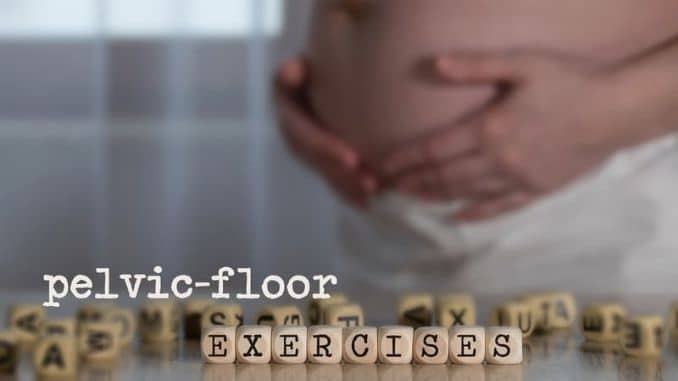
Lauren got up for the fifth time in one night and went to the bathroom. When she was finished, she flopped back in bed with a heavy sigh. This was getting ridiculous. She thought she was suffering from a chronic urinary tract infection (UTI), but tests had ruled that theory out. There were no bacteria, her doctor told her, but something was obviously not right.
Not only were her urinary issues preventing her from getting a good night’s sleep, but she was also suffering from a feeling of pressure in her pelvis. She went back to her family doctor, who referred her to a urogynecologist ― a specialist in female urinary issues. After further examinations, she was told that she was suffering from pelvic floor dysfunction.
According to the National Institutes of Health, nearly 24 percent of United States women have one or more pelvic floor disorders. The frequency increases with age, affecting more than 40 percent of women from 60 to 79 years of age and about 50 percent of women 80 and older.
If you’ve been diagnosed with a pelvic floor disorder or if you are suffering from some of the symptoms, you may be struggling to live your life without experiencing regular flare-ups. Below are some things to keep in mind that will help you feel better.
What Is the Pelvic Floor?
The pelvic floor consists of the muscles and tissues that support the pelvic organs, including the uterus, bladder, bowel, and rectum in women, and the bladder, bowel, rectum and prostate in men.
These muscles look like a hammock or sling stretched from the tailbone at the back to the pubic bone in front and from one sitting bone to the other. You can also imagine them forming a bowl-shaped container for the pelvic organs.
The urine tube, vagina, and colon all pass through these muscles. The pelvic floor muscles wrap around each one of these organs quite firmly and help control the bladder and bowel. If something goes wrong, it can affect a number of daily functions, including sexual intercourse, urinary function, and bowel function.
What Is Pelvic Floor Dysfunction?
Pelvic floor dysfunction (PFD) is a term that refers to a wide range of problems that can occur when the pelvic floor muscles aren’t functioning normally or when that hammock shape becomes weak or damaged. The muscles may be too tight or too weak, or there may be tears in the connective tissues.
Symptoms of PFD may include one or more of the following:
- Urinary incontinence and/or painful urination
- Incomplete emptying of the bladder
- Anal incontinence
- Unexplained lower back pain or hip pain
- Muscle spasms in the pelvis
- Heavy feeling in the pelvis
- Bladder inflammation and/or pain
- Constipation, straining and/or pain with bowel movements
- Pelvic organ prolapse
- Pelvic pressure and pain
- Pain during sexual intercourse
As far as what causes PFD, scientists aren’t entirely sure yet. They do know that women are more often affected than men and that certain things can increase risk, including:
- Childbirth as vaginal delivery can stretch or weaken some of the pelvic floor muscles and potentially damage nerves
- Obesity
- Traumatic injury to the pelvic region
- Prior surgery, such as a hysterectomy, or pelvic radiation
- Heavy lifting and straining
- Nerve damage, such as that may occur with diabetes, Parkinson’s disease or stroke
- Aging
- Weakened pelvic muscles, often associated with menopause
- Chronically tight pelvic muscles
- Emotional stress
Dos and Don’ts If You Have Pelvic Floor Dysfunction
If you are diagnosed with PFD, your doctor may prescribe medications, physical therapy or other treatments, depending on the specific symptoms you’re experiencing. Sometimes, these treatments are helpful but, sometimes, they don’t create enough relief or may make symptoms worse.
Even if you haven’t been officially diagnosed, you may suspect that PFD is affecting you. It’s best to check with your doctor to be sure that something else isn’t going on, like an infection. Often, lifestyle changes can make a significant impact on symptoms.
1. Do Perform Kegel Exercises, Unless They Make Symptoms Worse
PFD caused by childbirth can create weakened and stretched pelvic floor muscles. If you’re suffering from urinary leakage, strengthening these muscles may help.
Kegel exercises are the go-to solution for making your pelvic floor muscles stronger. To locate the muscles, imaging stopping your urine midstream and holding it, then letting it go again. You can also visualize sucking up a marble with your vagina, and then letting it go or picture tightening the muscles you would normally tighten when trying not to pass wind or urine at the same time.
Performing a series of 10 of these exercises ― where you hold the contraction for 10 to 15 seconds ― about two or three times a day can help you strengthen the muscles. Don’t do them when passing urine as that can lead to poor bladder emptying. If your symptoms improve, then keep doing them, but don’t overdo them as that can result in tightness. If the exercises seem to make things worse, it’s time to take the opposite approach.
2. Do Learn to Relax the PFD Muscles
Muscles that are overly stressed and tightened can cause PFD. If you live a stressful lifestyle, and if you tend to tense up in response to stress, this may be what’s causing your symptoms.
Other signs that tight muscles are to blame include pelvic pain, back pain, sudden urges to urinate and painful sexual intercourse.
Physical therapy can help you begin to relax these muscles. Deep tissue massage and trigger-point therapy can also be effective. Warm baths, heating pads, and meditation are good self-care options as are deep breathing and pelvic stretches. Here are a couple of movements to try:
-
- Happy baby pose: Lie on your back and open your knees wider than your chest. Bring them up toward your armpits and hold onto your legs behind your knees or at your ankles. Either hold the position or rock from side to side while you relax.
- Child’s pose: Start on your hands and knees, then spread your knees apart while keeping your big toes touching. Gently bend forward toward the floor with your chest, moving your torso down between your thighs. Keep your arms stretched out in front of you. Hold for at least 20 seconds, release and repeat.
3. Don’t Slouch
There is some evidence that poor posture over a long period of time can increase the risk of PFD, particularly if you tend to sit a lot slumped over a computer. When you sit slouched, you’re sitting on the sacrum (tailbone), which displaces the position of the pelvic organs backward. This, in turn, puts pressure on the pelvic muscles.
Practice good posture by maintaining the curve in your back when sitting and by sitting on your sitting bones rather than the tailbone. You can also think of your pelvis as a bowl that you tilt slightly forward so that the water spills out.
The same principles apply when standing. The pelvis should be tilted slightly forward, shoulders back and head straight up.
4. Do Continue to Exercise
Sometimes, the symptoms of PFD can interfere with your daily exercise, but it’s important to get out and move. The best exercise is walking, so try to fit in a couple of miles each day. It helps build hip and pelvic strength and is a better option than running, particularly if you think you may have overly tight pelvic muscles.
Squats are another good exercise for those with PFD. Doing them regularly can help reposition the pelvis to where it should be. If you notice that you seem to have a flat behind and no curve in the small of your back, squats would be a good option for you.
5. Don’t Wear High Heels
High heels change your entire posture, throwing your pelvis forward and straining your knees and hips — all of which can make PFD worse. Choose quality shoes with good arch supports that help maintains proper posture.
6 Don’t Suck in Your Gut
Women are often taught to “suck in” their tummies to appear slimmer, but if you are sucking it in constantly, you could be overly tensing and tightening your pelvic muscles. This sort of contraction also increases downward pressure on the pelvic floor and strains the connective tissues.
Most of the time, you should be relaxing your abdomen, not tightening it. Whenever you’re sitting or lying down, remind yourself to relax your belly.
7. Do Strengthen Your Core Muscles
Your core or abdominal muscles are higher than your pelvic floor muscles. Strengthening them can help take the pressure off your pelvis. You can use whatever exercise works for you.
Here is one that you can do anytime during the day: While sitting or standing, take in a deep breath while keeping your shoulders down and pulling your abdomen toward the back of your spine. It should feel like you’re engaging a corset. Hold that contraction for about 10 seconds, then relax and repeat, up to 10 to 20 times a day.
8. Do Get More Fiber and Probiotics
If one of your symptoms is constipation, you may need to get more fiber in your diet. Make sure you’re exercising and drinking enough water, then add more high-fiber foods like lentils, beans, vegetables, and fruit to help restore a normal digestive rhythm.
Foods rich in probiotics may also help to improve constipation. Try kombucha, miso, yogurt, kefir, and tempeh or consider probiotic supplements.
9. Do Retrain Your Bladder
If you’re experiencing frequent bladder urges, you may be able to “retrain” the bladder to relax and act more normally. Resist running to the bathroom every time you feel the slightest urge. Instead, try to lengthen the time between visits, until optimally, you’re going only once every two hours. The best approach is when you feel an urge, wait at least five minutes, more if you can. In time, you should notice improvement.
When you do finally go, you can perform a simple test to find out if your bladder was full or not. A full bladder typically takes about ten seconds to empty out, so count as you’re going to determine how you’re doing.
10. Don’t Eat or Drink Things That Irritate Your Bladder
If you’re experiencing bladder problems, avoid those foods and drinks that make it worse. These include alcohol, caffeine, citrus fruits and drinks, spicy foods, tomato-based products, artificial sweeteners, and carbonated drinks ― the bubbles can irritate the bladder. Try staying away from these for a week and see if your symptoms improve.
11. Do Practice Yoga or Pilates
Both of these exercises can help strengthen the core, which improves pelvic floor strength and flexibility. Yoga involves a meditative sort of deep breathing that can also help you relax tight pelvic floor muscles.
12. Don’t Ignore Worsening Symptoms
If you’re still experiencing symptoms or if they’re getting worse, be sure to check with your doctor. There are a number of therapy options that can help.
For your guide to strengthening your core, make sure to check out 10 Easy Movements to Strengthen Your Core, here!






